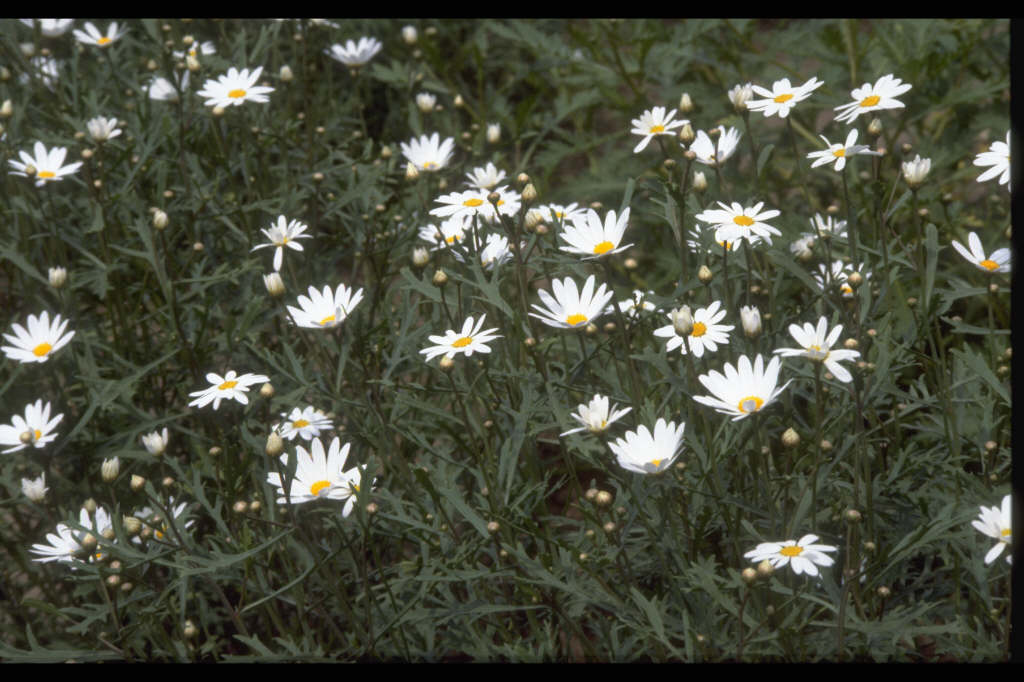Argyranthemum frutescens subsp. canariae
Canary marguerite
An evergreen subshrub to 60cm tall, with divided, dull grey-green foliage and large, yellow-centred, white daisies. Free-flowering over a long period
Size
Ultimate height
0.5–1 metresTime to ultimate height
1–2 yearsUltimate spread
0.1–0.5 metresGrowing conditions
Moisture
Moist but well–drained, Well–drainedpH
Acid, Alkaline, NeutralColour & scent
| Stem | Flower | Foliage | Fruit | |
| Spring | White | Green Grey Silver | ||
|---|---|---|---|---|
| Summer | White | Green Grey Silver | ||
| Autumn | White | Green Grey Silver | ||
| Winter | Green Grey Silver |
Position
- Full sun
Aspect
South–facing or West–facing
Exposure
ShelteredDrought resistance
Yes Hardiness
H2Botanical details
- Family
- Asteraceae
- Native to GB / Ireland
- No
- Foliage
- Evergreen
- Habit
- Bushy
- Genus
Argyranthemum are evergreen woody-based perennials or sub-shrubs, with simple or pinnately dissected leaves and white, yellow or pink, daisy-like flower-heads from late spring to autumn
- Name status
Correct
How to grow
Cultivation
Grow in moderately fertile, well-drained soil in full sun. Deadhead regularly to prolong flowering and pinch growing tips to keep compact. Best used as a summer bedding plant. Mulching helps to conserve water. Water in prolonged dry spells
Propagation
Propagate by softwood cuttings in spring, and semi-hardwood cuttings of non-flowering shoots at other times
Suggested planting locations and garden types
- City and courtyard gardens
- Coastal
- Patio and container plants
- Mediterranean climate plants
- Flower borders and beds
- Wall side borders
Pruning
Deadhead regularly, pruning group 10
Pests
Leaf miners may be a problem
Diseases
Crown gall is an occasional problem
Get involved
The Royal Horticultural Society is the UK’s leading gardening charity. We aim to enrich everyone’s life through plants, and make the UK a greener and more beautiful place.
